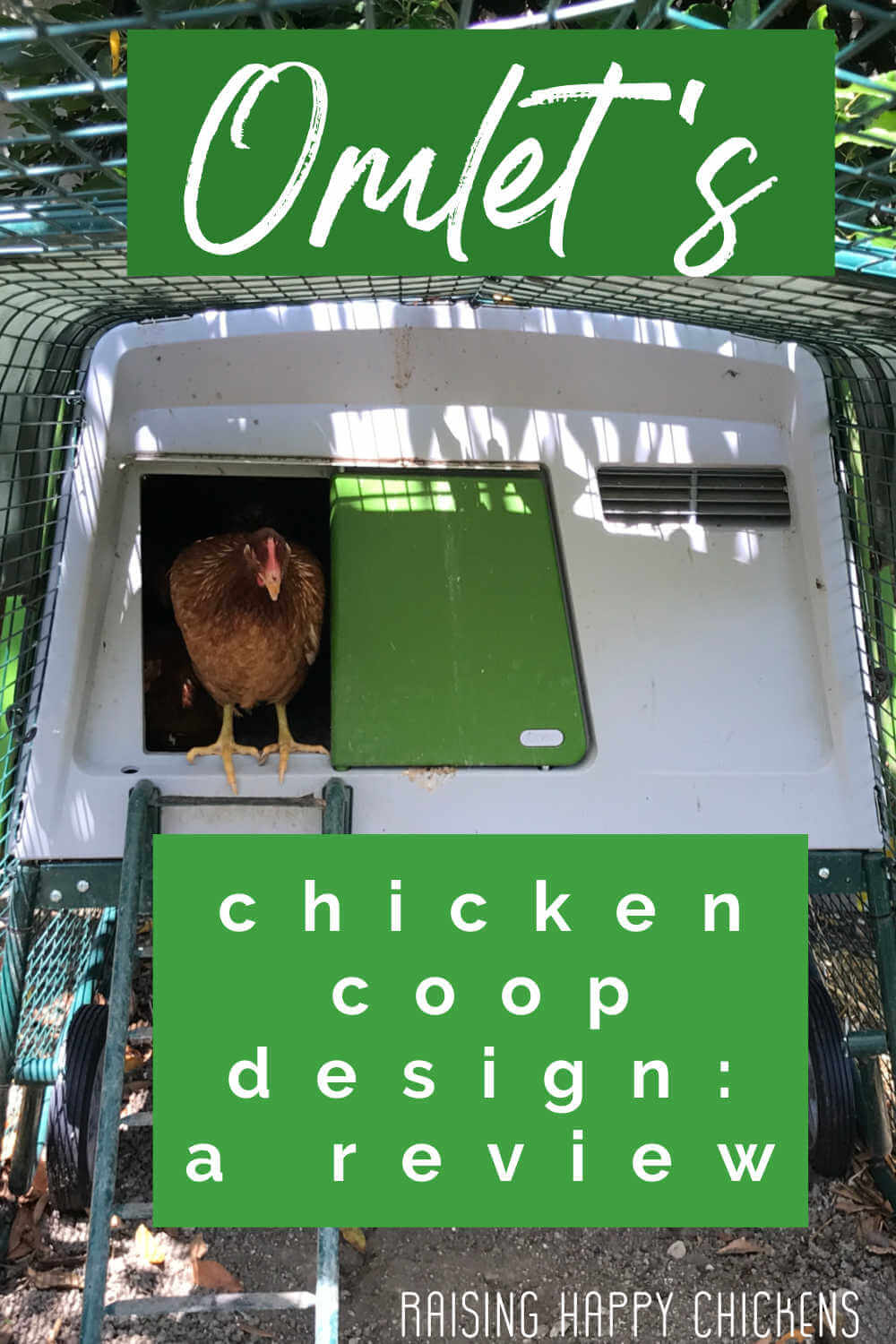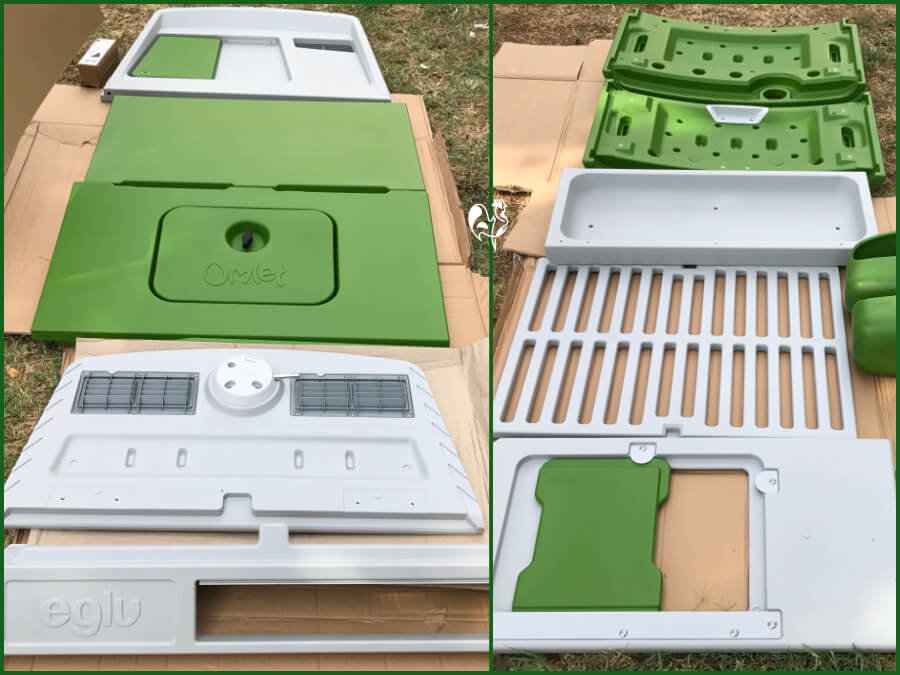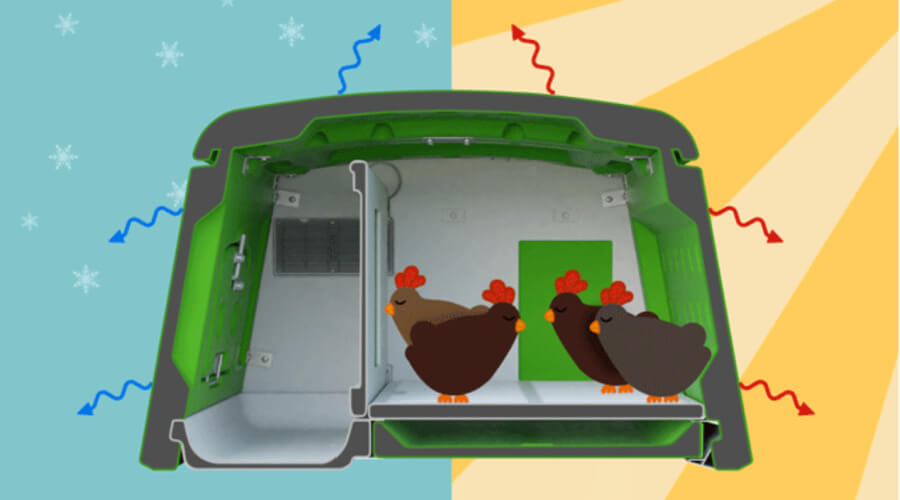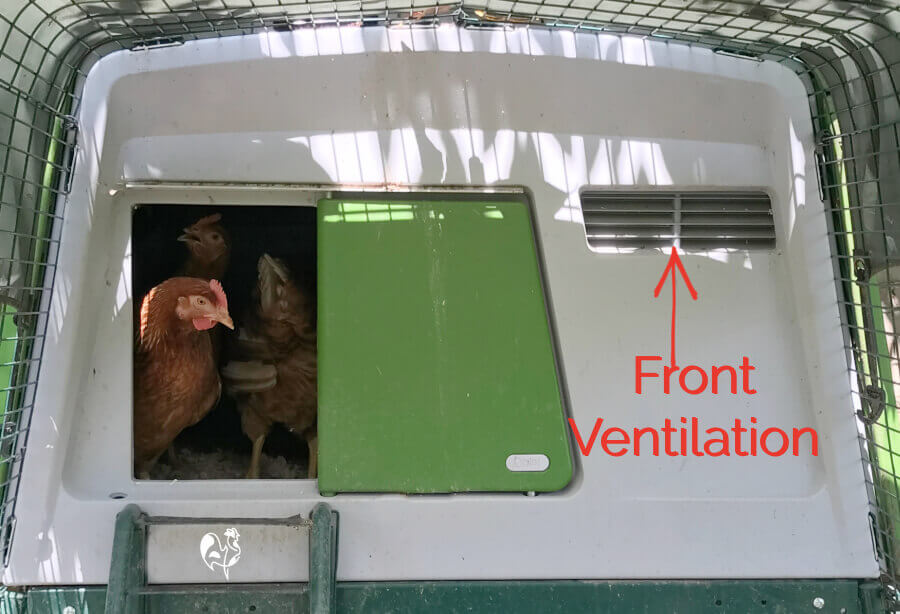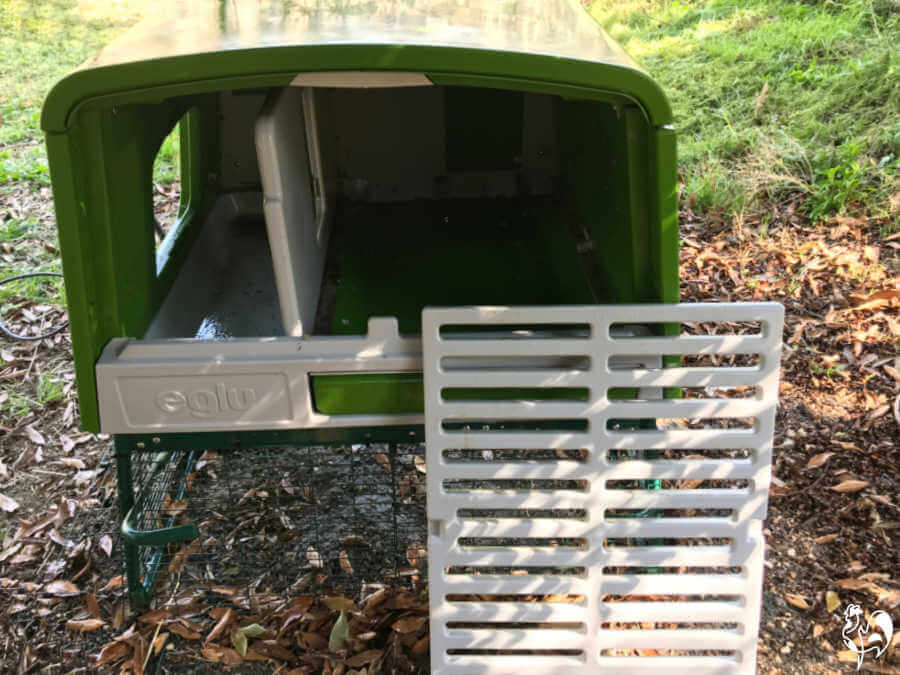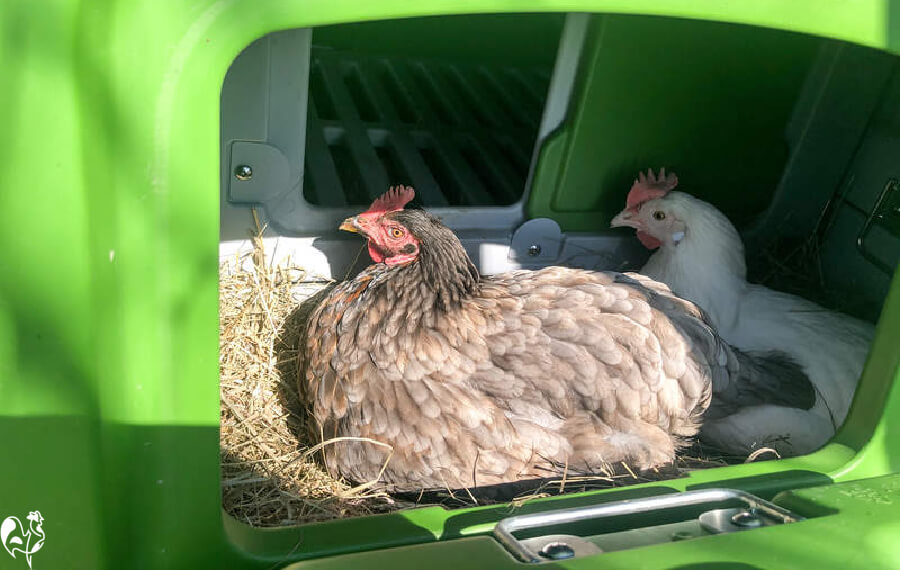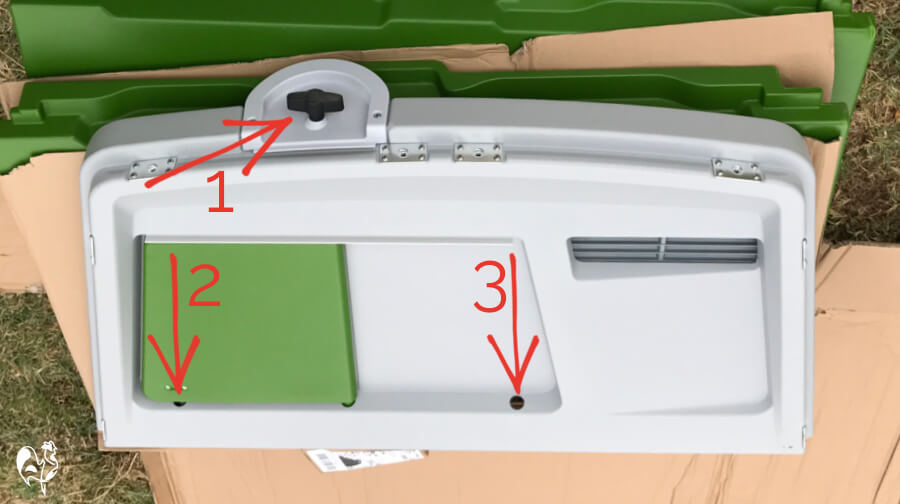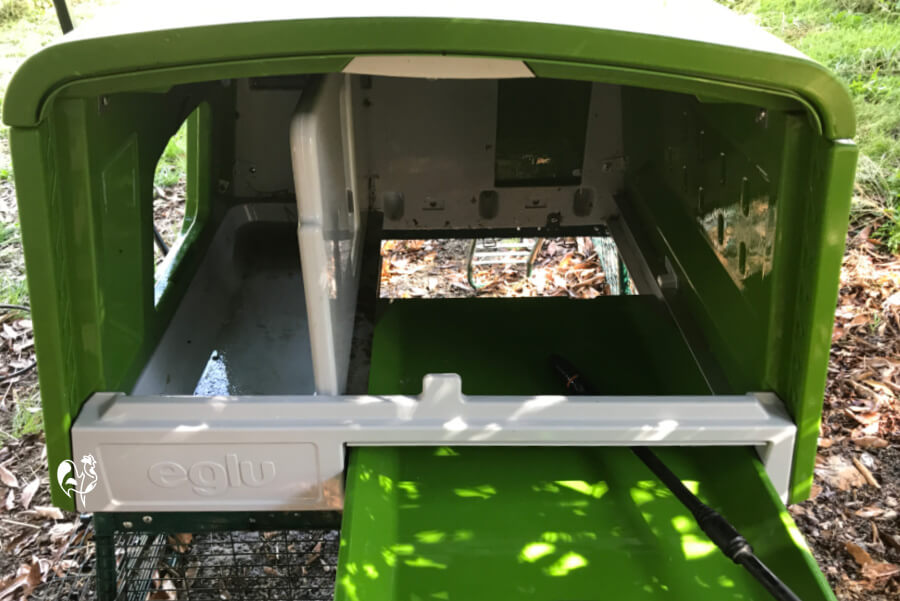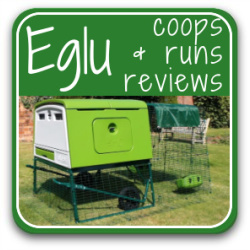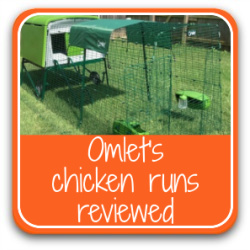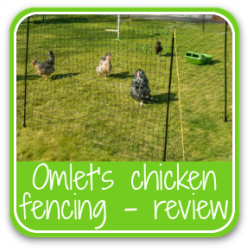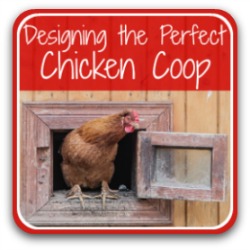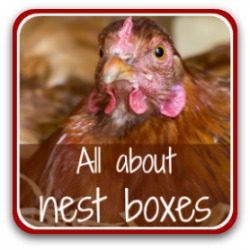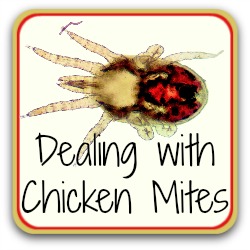- Home
- Omlet's Coops
- Design
The Omlet chicken coop: what makes its design so special?
Creating the best environment for your flock is critical to their health. So what makes a good coop? And how does the Omlet design hold up?
The chicken coop is likely to be the most expensive item we'll buy for our chickens, so we need to know it's going both to last for years, and provide everything they need to keep them safe and healthy.
In this article, I compare the agreed welfare needs for housing design(1, 2, 3) against the design of Omlet's chicken coops.
Omlet is a company formed in 2003 by a group of design students in London, England, who wanted to design the ideal urban chicken coop. And so, the original Eglu was born.
They now produce different types of coop, including the small Eglu Go, a chicken coop for up to four chickens; the larger Eglu Cube which houses up to ten; and the addition of wheels to turn them all into mobile chicken coops.
Not to mention Eglu beehives, rabbit hutches and even hamster cages!
No matter the size and shape, all Eglu chicken coop designs have the same construction specifications.
Are they the best? Here's my review of the Omlet chicken coop manufacture and designs.
If you purchase a product through links on the rest of this page, I receive a small commission at no extra cost to you. I only recommend products I have purchased or would purchase myself and which I believe would benefit you. To learn more please see my disclosure policy.
To go directly to Omlet's pages and buy one of their coops, click on any of the images on this page.
This is a detailed page. If there's a particular section you need information about, use these links to jump there.
Otherwise, carry on reading to get the whole picture.
Construction materials: are the Omlet Eglus a pvc (plastic) coop?
Omlet chicken coops are incredibly well made and hard-wearing. I've had my Eglu Cube for nearly ten years now. It's been outside in the fairly extreme temperatures of Italy, and it's showing no signs of wear.
That's because Omlet's products are designed from a tough but low energy plastic called polyethylene. It's both resilient and eco-friendly, since it's made at low temperatures and not under pressure, and it's 100% recyclable without using any chemicals(4).
So it's relatively "green" in production. But how does it measure up to welfare requirements?
According to all published welfare specifications(1, 2, 3) coops should be:
- free from sharp edges and parts that stick out and could injure chickens
- free from electrical wiring
- free from toxic paint or other preservatives
- uncontaminated by wild bird droppings.
The coops come as a kit which you'll need to put together yourself. The pieces interlock, so there's no spaces for rain, snow or bird droppings – or any other external matter – to get in.
Apart from the open door, of course. More about security later in this article.
- As you handle the pieces, you'll see and feel how sturdy they are. And the rounded edges mean no sharp corners.
- To prevent the plastic and paint degrading in any weather conditions – and to make sure they last – all parts are protected by ultra-violet stabilisers, which meets the "no toxic paint" criteria. And you'll notice that also means there's no smell, which is often a problem with other pre-fabricated coops.
- This means that Omlet are justified in making the claim that their designs will last for anything upwards of 10 - 15 years, which my own experience confirms. In fact, I'm hoping my Eglu Cube will last at least another ten!

Omlet's coop design and heat / cold.
This is one of the most important considerations for any coop. The regulations are very specific:
"Buildings must be designed, constructed, maintained and sited to: a) protect hens from thermal discomfort b) be suitable for local weather conditions and withstand expected seasonal extremes of weather...
Provision must be made to ensure that hens have access to a thermally comfortable environment at all times, so that heat/cold stress does not occur."(3)
It's also suggested that they should have internal membranes so that they're better insulated to strengthen insulation against weather extremes, and also to help soundproof against noise, which can cause unnecessary stress to poultry(1).
If you're looking for an insulated chicken coop to keep your flock safe in extreme temperatures, Omlet's Eglu designs have exactly what you need.
All Omlet coops are built with double walled insulation. It works something like window double glazing, keeping cold – or hot – air out of the coop.
In the winter, it traps your chickens' body heat inside so it keeps them warm without any additional protection. Although if you have a particularly cold climate, or if you only have a very few chickens in one of the larger coops, it's possible to buy an Extreme Weather Protection cover.
In hot weather, the insulation system keeps the warm air out and combines with the coop's vents to allow the hens' warm air to escape while fresh air comes in. It's highly efficient.

Ventilation.
Part of any designs for a chicken coop must include ventilation. Without it, heat will build up in summer and moisture in winter, creating the possibility of heatstroke at one extreme and frostbite at the other.
Welfare regulations state that...
- "you must keep circulation, dust levels, temperature, relative air humidity and gas concentrations within safe limits
- you must make sure that insulation and ventilation is designed to avoid heat and cold stress. You must also protect confined birds from draughts in cold conditions
- ventilation systems... must be designed and managed to maintain air quality, to ensure that aerial contaminants do not reach a level, at bird height, at which they are noticeably unpleasant to a human observer."(1)
And as climate change creates ever more extremes of temperature, making sure of adequate ventilation will become increasingly important.
Omlet's chicken coop ventilation hits all the requirements.
To be effective, ventilation needs to be positioned so as to allow air to freely flow through the coop, but at a height which doesn't chill the chickens.
The Omlet coops have three vents: a large one at the front, and one at each side. As you can see from this photo of my Eglu Cube, the vents are situated above the head height of the chickens.
So, good ventilation and no draughts. Exactly what the welfare regulations suggest is the best position for a comfortable, safe coop.

Omlet's chicken coop nesting box and perches design benefits.
Perches (also known as roosting bars).
The perches of all Omlet's coops are designed identically and made in the same materials as the coop shell.
As with every other design aspect, they meet the welfare needs of your flock(1, 2, 3):
- perches and platforms should be designed so they won’t cause discomfort, distress or injury to the birds. They must offer enough support, especially for the forward facing claws of each foot
- hens must be able to wrap their toes around it... with no sharp edges
- there should be enough space for all chickens to comfortably roost at the same time
- birds must not have access to the droppings pit.
The perches form the floor of the main body of the coops, and sit above the droppings board. Both are removable for cleaning.
I prefer my large chicken house roosting bars to be slightly wider. However, as the Eglu perches are all on the same level, it's easy for chickens to hunker down over their feet, as they prefer to do in cold weather.
Please note that the perch design is not suitable for baby chicks under about 12 weeks old. They are likely to slip between the bars and injure their legs.
If you have babies, remove the perch section and add a non-slip cover and bedding to the lower floor (which would normally be the droppings board).
Nest box.
The nest box areas are different designs depending on the coop, but they all match these welfare requirements:
- egg-laying hens need quiet, enclosed nest boxes. These should be draught-free and lined with a clean, dry, comfortable nesting material, such as straw or wood shavings(2)
- they should be enclosed and draught-free, with a suitable floor substrate that... encourages nesting behaviour and minimises the risk of build up of parasites and disease(3).
There's a potential drawback to the nesting area in that no matter which coop, there is only one for all the hens. That may lead to hens laying outside.
Having said that, I have always found my Eglu hens lay inside. Anyone who's had chickens will know that they often prefer to lay in the same box – no matter how many you provide!

Is the Eglu chicken coop predator proof?
This is, of course, one of the most important criteria when choosing a chicken coop. How predator proof is it?
The welfare requirements here are very general. A coop should...
- keep out predators, rodents and wild animals
- prevent vermin easily getting to the insulation material.(1)
And again, the Eglu meets those requirements easily.
- The pieces slot together, so there are no holes – not even the tiniest hole a rat could get through – anywhere.
- Because of their interlocking design, no predator will be able to pull it apart. Not even a bear. Compare that to a wooden coop, which is fairly easily destroyed.
- The door is the most obvious place a predator could get through. But the Eglu door latches securely. It's necessary to pull the turner on the roof upwards at the same time as twisting it. Even predators like the raccoon, who are experts at lock-opening, will have difficulty with that.
- The metal bar attached to the recessed turner (1) slots into a hole in the plastic to keep the door securely closed (2). When it's open, the metal bar slots into the other hole (3). Only by lifting and twisting the turner can the door be opened and closed.
- And the plastic is so tough (see my first section) that it won't be ripped out.
- So while the door is large enough for your chickens to pass through easily without having to crouch, it's also about as predator-proof as a door could be.

Are Omlet chicken coops easy to clean?
Coops must be...
- easy to maintain for hygiene and air quality
- flooring must allow effective cleansing and disinfection, preventing significant build up of parasites and other pathogens.
Because the Omlet coops can be taken apart, they're incredibly easy to keep clean. I use a pressure washer and allow the separate parts to dry in the open air.
It takes a matter of minutes.
My only issue with washing is that the nest box does not have a drainage hole. You can see in the photo above that the water collects in the nest box (on the left).
So rather than leaving it to dry, I use a sponge to wash it, then towel dry.
Omlet design benefits and chicken mites.
Linked to cleaning is the need to limit disease. The ideal chicken coop should...
- limit the risk of disease
- minimise insect infestation
- help prevent internal and external parasite infestations (and be easy for you to treat any that do break out).(1, 2, 3).
I consider this to be one of the greatest advantages of the Omlet coops. As well as the Cube, I house my chickens in a large, stone built coop and have a third, wooden coop which I use as a hospital.
Both of them are a nightmare in terms of infestations. Stone and wood provide ideal hiding places for mites and lice and are very difficult to treat.
The Omlet coops, on the other hand, have nowhere for bugs to hide. Their smooth surfaces provide no nooks and crannies, and the fact that they can be dismantled for cleaning means regular disinfecting is a breeze.
As an added bonus, the plastic from which they're built will not rot. So there are no obstacles to pressure washing.
Need more evidence? Take a look at Omlet's short video.

Conclusions: are Omlet's chicken coops right for you?
- Omlet's Eglu chicken coop range are well designed, last for years and require almost no maintenance apart from regular cleaning.
- They not only provide a weather-proof house, the attention to detail and chicken welfare limits the risk of illness, disease, injury and infestations and helps maintain a healthy, happy flock.
- They work exceptionally well for families with smaller gardens, especially in urban areas and when combined with one of Omlet's runs.
- Mine is part of my large, rural "chicken city", way out in the the middle of nowhere. And it works perfectly there.
- So basically, they can work anywhere!
How many eggs do Omlet's chicken coops deserve?
If you've read any of my other product reviews, you'll know that I have a "Golden Egg Award" where one egg means "don't go near this product!", and five means "get out there now and buy it!"

A Fabulous Five Golden Eggs!
They're expensive, and I could have subtracted an egg for that. But in my view their benefits far outweigh the cost.
The materials and design together mean they should last for years, whereas a wooden coop, for example, will have a life of between five and eight years even if cared for well, and don't provide the same benefits.

Where to buy an Omlet chicken coop.
- Resale sites such as eBay occasionally have Eglus for sale.
- It's always worth looking out in your local press. That's where my sister bought her pre-loved Eglu Go, at a far reduced cost.
- Otherwise, use the Omlet website. They sell globally and offer a 30-day "no questions asked" returns policy.

Other questions about Omlet's chicken coops that people ask me frequently.
How many chickens do Omlet's chicken coops hold?
How many chickens do Omlet's chicken coops hold?
There are two choices:
The Eglu Go and Go Up holds between two and four medium to large breed chickens.
The Eglu Cube houses between four and six medium to large breed chickens.
Both depend also on the size of the attached run. If you intend to provide a large run and free range for at least some of the time, Omlet estimate the Cube will hold up to ten hens.
I personally think that is too many for the size of the coop itself. I'd assess no more than six.
How big are Omlet chicken coops?
How big are Omlet chicken coops?
Take a look at this page on Omlet's website, where you can compare the different types of coop including their size.
Are Omlet coops fox proof?
Are Omlet coops fox proof?
Yes. The interlocked design and the pop and nesting box door handle construction make all the Omlet coop designs secure against predators.
Of course, it's also critical to make sure the run is secure, that the chickens are all roosted before dusk, and that the doors are securely fastened.
Can rats get into the Omlet chicken coop?
Can rats get into the Omlet chicken coop?
Rats can (and will) get anywhere they smell grain. If the coop's door is left open and there's grain inside, they will find a way.
To prevent this, make sure the run is rodent-proof, and keep grain inside a secure container.

If this article has helped, here are some other pages you'll find useful.

Sources.
1. Omlet's Eglu Design Pub. Omlet, updated 2022.1. Department for the Environment, Food and Rural Affairs: Poultry Welfare Codes – Housing Design. Pub. UK Government, 2019.
2. Royal Society for the Prevention of Cruelty to Animals: The best environment for keeping pet chickens. Pub. RSPCA, 2022.
3. Royal Society for the Prevention of Cruelty to Animals: The 5 welfare standards for laying chickens. Pub. RSPCA, updated 2022.
4. Omlet: Chicken coops.
- Home
- Omlet's Coops
- Design
